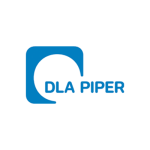On May 11 2022, the European Commission published the debt-equity bias reduction allowance (DEBRA) directive proposal. The proposal introduces an allowance for equity-financed new investments on the one hand, but further limits deductibility of interest expense on the other hand.
This proposal, once adopted as a directive, should be implemented by member states into their national legislation by December 31 2023 and enter into force as of January 1 2024.
Background
The tax regimes of EU member states generally allow for the deduction of interest payments on debt when calculating the tax base for corporate income tax purposes, while costs related to equity financing, such as dividends, are mostly non-deductible. This leads to a more favourable treatment of debt than equity (tax-wise), giving enterprises more incentive to borrow, rather than to fund investments by increasing capital.
In the Netherlands, (arm’s-length) interest payments made by a Dutch taxpayer are in principle deductible, if the financial instrument qualifies as a debt instrument, unless certain interest deduction rules apply. The Netherlands has specific interest deduction rules, and has implemented the earnings stripping rule of the first EU Anti-Tax Avoidance Directive (ATAD) as follows: interest deduction is limited to 20% of the earnings before interest, tax, depreciation, and amortisation (EBITDA), with a threshold of €1 million ($1.016 million) and a carry-forward rule for non-deductible interest.
Notwithstanding the foregoing, the EU still perceives there to be a debt bias that (among other corporate factors) contributes to an excessive build-up of debt for companies. A high amount of debt could threaten the financial stability of enterprises (making businesses vulnerable to unforeseen changes in the business environment), and increases the risk of bankruptcies (particularly in times of crisis, such as the COVID-19 pandemic).
Purpose
The proposed directive aims to encourage companies to finance investments through equity rather than debt.
Scope
The DEBRA proposal would apply to all taxpayers subject to corporate income tax in one or more member states, with the exception of certain financial undertakings, such as credit institutions, investment firms, insurance undertakings, and certain pension institutions.
Content of the proposal
The DEBRA proposal contains two measures that apply independently:
An allowance on equity; and
A limitation to interest deduction.
1. Allowance on equity
To encourage equity-financed investments, a deductible allowance on equity is introduced. This allowance is calculated by multiplying a base (‘allowance base’) by a rate (‘notional interest rate’).
The allowance base is the difference between the amount of equity (as defined in Article 3(6) and 3(7) of the proposed DEBRA directive) at the end of the tax year and the amount of equity at the end of the previous tax year.
The rate (notional interest rate) is composed of a risk-free interest rate (specific for each currency) for a ten-year debt. This rate is then increased by a risk premium of 1% or, in the case of small and medium-sized enterprises (SMEs), a risk premium of 1.5% (since financing SMEs is generally perceived to be of more risk).
The calculated equity allowance in any given year is deductible for ten consecutive tax years. To prevent tax abuse, the deductibility is limited to 30% of the EBITDA for each year.
If there is insufficient taxable profit that prevents part of the calculated equity allowance from being deducted, that part can be carried forward without time limitation.
Any unused equity allowance exceeding the 30% of taxable income can be carried forward, for a maximum of five tax years.
2. Limitation to interest deduction
On the other side, to discourage the use of debt, the proposal introduces an interest deduction limitation. A maximum of 85% of the exceeding borrowing costs (interest paid minus interest received) will be deductible from the tax base. Thus, 15% of those costs will not be deductible.
Anti-abuse rules
To prevent the use of the equity allowance for unintended purposes, the proposal contains several anti-abuse rules.
ATAD 1
A concurrence between the existing ATAD 1 interest limitation rules and the proposed interest deduction limitation may occur. In that case, the DEBRA limitation applies first. The ATAD 1 limitation comes after. If the result after application of the ATAD 1 rules is a lower deductible amount, the difference may be carried forward or back.
Comments from a Dutch tax perspective
The DEBRA proposal encompasses a carrot and a stick for taxpayers.
Many welcome the equity deduction allowance with open arms (carrot), as a useful tool to support the recovery of companies from the COVID-19 pandemic and to create an incentive to invest through equity. At the same time, a(nother) limitation on interest deduction further restricts corporations in their debt financing possibilities (stick).
There are also still questions on the concurrence between ATAD 1 and the DEBRA proposal. For example, the interest deduction rule in DEBRA refers to Article 4 of ATAD 1 for the purposes of calculating the non-deductible interest. However, EU member states may have implemented ATAD 1 differently, with lower EBITDA percentages than 30% (such as the Netherlands), lower thresholds for exceeding borrowing costs that are always deductible than €3 million (such as the Netherlands) or such EU member states may have opted to introduce the grandfathering clause (which DEBRA does not contain).
Some criticism
The concurrence between the proposed interest deduction limitation and ATAD 1 could cause part of the financing cost surplus to be permanently lost. The proposal could also affect the applicability of the often-favourable Dutch participation exemption. The equity allowance can lead to a lower tax burden compared with non-EU-entities unable to apply the equity allowance.
The subject-to-tax test (that is, income is subject to a real income tax of at least 10%) would be more difficult to pass. Due to the combination of local tax base differences with the proposed equity allowance, it becomes more complex to fully calculate the real income tax rate of a country (especially if it concerns a non-EU subsidiary).
Lastly, regarding the OECD’s pillar two (global minimum tax), financial statements might not account for the proposed equity deduction, which could impact the recognised effective tax rate for pillar two purposes.
Key takeaways
The equity allowance is a welcome incentive for equity financing that may, in particular, help start-ups and scale-ups. Although complicated factors such as the effect on the participation exemption and pillar two make it interesting to see if the DEBRA proposal in its current form will, and can ultimately, be adopted, taxpayers would be wise to review their current financing structure, as well as their funding mix in the future.













